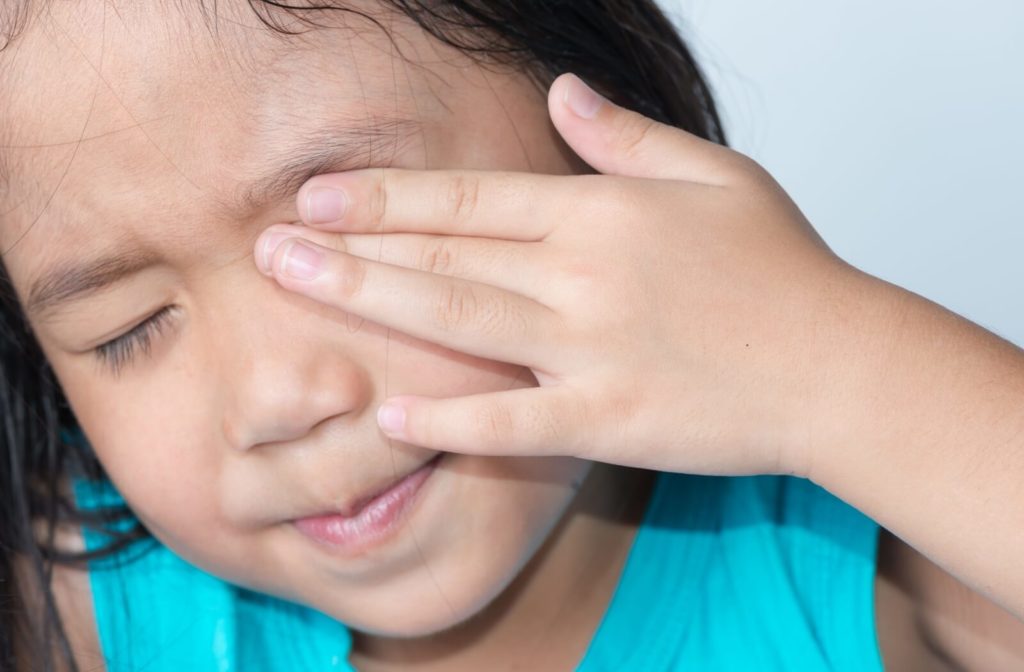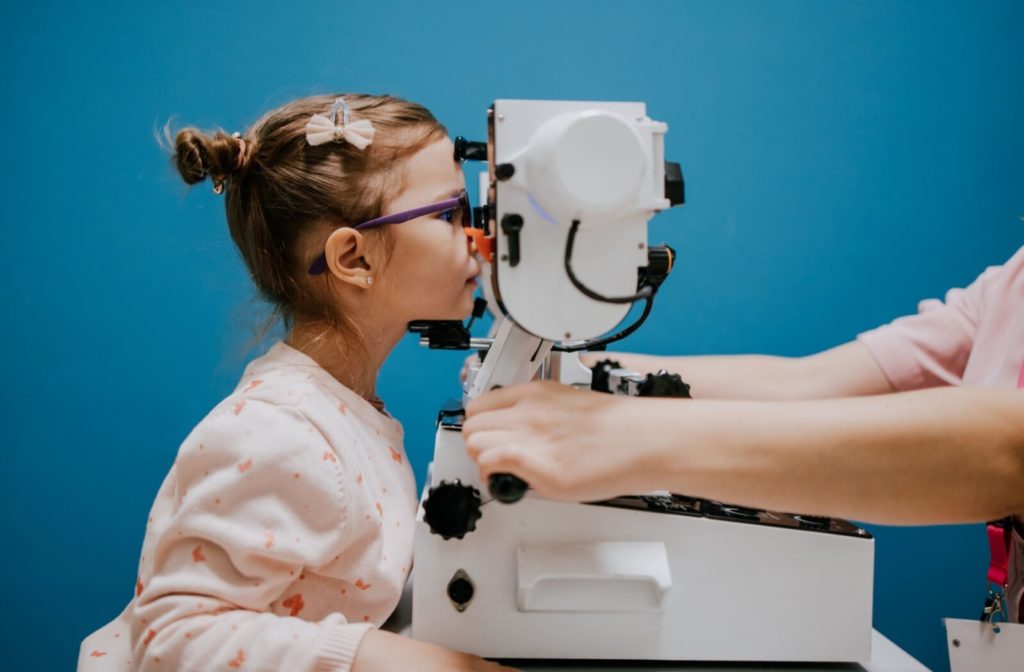Children’s eyes may change rapidly in early childhood. As a parent, you may be wondering when you should schedule an eye exam for your child. Generally speaking, your child should have their first eye exam between 6-12 months and again when they are 2-5 years old. Our team at 2020 Eyecare Ohio are pleased to offer eye exams for children older than 3.
Recommended Childhood Eye Exam Schedule
Newborns’ eyes will be checked at birth, however, the American Academy of Ophthalmology has provided guidelines for when you’ll want to schedule your child’s eye exams.
The 6-month Checkup
Infants’ eyes change rapidly in the first year of life, and it’s important to monitor how their vision is developing. The first recommended checkup for children should be scheduled when your child is 6-12 months old. At this appointment, your ophthalmologist will do a variety of tests, such as:
- A visual inspection of the eyes
- An examination of the eyes’ alignment and movement
- A “red reflex test”
- A test of blink and pupil responses
The Preschool Checkup
The next time you’ll need to schedule your child for an eye exam will be in their preschool years (ages 2-5). This is done to ensure that any vision problems that may impact your child’s ability to learn how to read can be treated quickly to protect your child’s vision. At this exam, ophthalmologists will investigate things like:
- Your child’s visual acuity (sharpness of vision)
- If your child has strabismus (crossed eyes) or amblyopia (a lazy eye)
- Whether your child has any focusing problems
Eye Exams For School-Aged Children
Once your child enters school, it is important to monitor their vision development and make sure vision problems don’t impact their learning. Children should have an eye exam annually from ages 6-19. In these eye exams, children will be monitored for any changes in their visual sharpness and focusing abilities.
Common Vision Problems in Children

Refractive Errors
Refractive errors are eye disorders that happen when the shape of the eye does not focus light correctly as it enters the eye, leading to blurred vision.
- Hyperopia (farsightedness) is when objects that are close up appear blurry.
- Myopia (nearsightedness) is when objects that are far away appear blurry.
- Astigmatism is when objects that are far away and objects that are close up appear blurry.
- Strabismus or crossed-eyes occur when the eyes are misaligned, and is common in young children.
- Amblyopia or a lazy eye is when one eye has worse vision than the other.
Non Refractive Errors
Non-refractive errors are eye disorders that are not related to how the eye focuses light. These eye disorders are rare in children. Some non-refractive error eye disorders include:
- Cataracts: an opaque area on the cornea that can cause vision loss.
- Retinoblastoma: is a rare retinal cancer.
- Glaucoma: an eye disorder caused by pressure in the eye damaging the optic nerve
Noticing Vision Problems in Your Child
If you ever suspect that your child is having vision problems, consult your pediatrician or ophthalmologist. We’ve included some signs of visual problems in children to be on the lookout for.
The ‘RSVP’ Rule
When it comes to noticing vision problems in children, the American Academy of Ophthalmology recommends sticking to the RSVP rule:
- Redness of the eyes
- Sensitivity to light
- Vision change
- Pain in the eyes
If your children show any of these symptoms, consult a pediatrician or an ophthalmologist immediately.
Common Signs of Vision Problems
Some more common signs that your child may be having vision problems include:
- Sitting too close to screens or bringing objects close to their face to see them
- Squinting or covering one eye
- Excessive eye rubbing
- Headaches
- Short attention span
- Difficulty concentrating or reading
Booking Your Child’s First Eye Exam
Booking your child’s first eye exam is important, and here at 2020 Eyecare Ohio our exceptional team of eye care professionals is to help you through the process. We offer comprehensive eye exams for children ages 3 and up, where we examine your child’s visual acuity, focus, hand-eye coordination, and more to ensure that your child can see clearly! If your child is under the age of 3, we will happily recommend a trusted colleague for your baby’s first eye exam.
We want your children to feel their best, which is why we also offer treatment plans and a wide variety of eyewear options for children experiencing vision problems. Contact us today to book an appointment!



